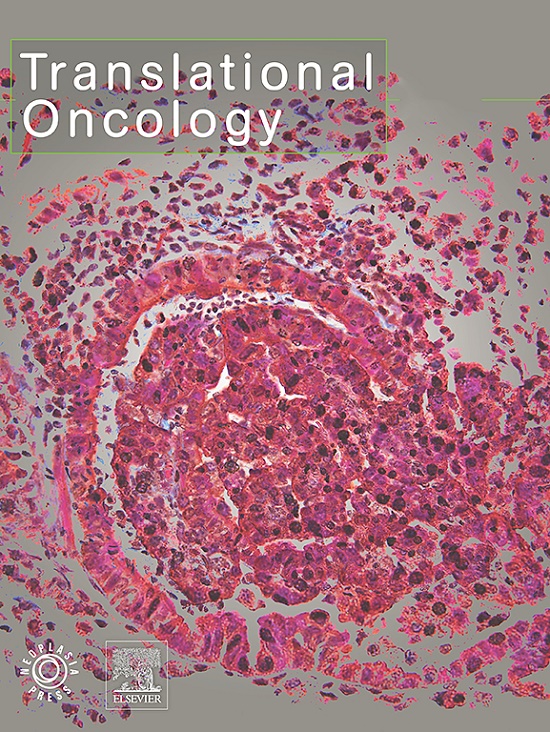3-羟基氰酸通过抑制生长和DNA损伤诱导α抑制口腔鳞癌细胞的生长。
IF 5
2区 医学
Q2 Medicine
引用次数: 0
摘要
目的:3-羟基苯甲酸(3-HAA)在口腔鳞状细胞癌(OSCC)中的具体作用尚不清楚。本研究探讨了3-HAA在OSCC中的作用及其机制。材料和方法:采用CCK-8法、菌落形成法、EdU掺入法和异种移植小鼠模型研究3-HAA对OSCC的影响。通过RNA-seq、凋亡阵列和细胞周期阵列研究其潜在机制。利用短发夹rna (shRNAs)敲低OSCC细胞中生长阻滞和DNA损伤诱导α (GADD45A)的表达。采用CCK-8和异种移植小鼠模型来阐明GADD45A的作用。采用荧光素酶报告基因法测定GADD45A与阴阳1(YY1)的结合位点。结果:3-HAA在OSCC患者中选择性下调,且随着病理进展,下调程度增强。犬尿氨酸3-单加氧酶(KMO)和犬尿氨酸酶(KYNU)的高表达可增加3-HAA的含量,与OSCC患者预后较差相关。体外和体内外源性3-HAA均可抑制OSCC细胞的生长。3-HAA诱导OSCC细胞生长阻滞、G2/ m期阻滞和凋亡。RNA-seq结果显示,3-HAA显著增加GADD45A的表达。3-HAA通过转录因子YY1促进GADD45A的转录。GADD45A敲低可显著逆转3- haa诱导的OSCC细胞生长抑制。讨论:3-HAA通过GADD45A诱导OSCC细胞凋亡和细胞周期阻滞,提示3-HAA和GADD45A是OSCC潜在的治疗靶点。本文章由计算机程序翻译,如有差异,请以英文原文为准。

3-Hydroxyanthranic acid inhibits growth of oral squamous carcinoma cells through growth arrest and DNA damage inducible alpha
Objectives
The specific role of 3-hydroxyanthranilic acid(3-HAA) in oral squamous cell carcinoma (OSCC) remains unclear. This study investigated the roles of 3-HAA in OSCC and the underlying mechanism.
Materials and methods
The effects of 3-HAA on OSCC were examined using CCK-8, colony formation, EdU incorporation assays and xenograft mouse model. The underlying mechanisms were investigated with RNA-seq, apoptosis array and cell cycle array. Short hairpin RNAs (shRNAs) were used to knockdown the expression of growth arrest and DNA damage inducible alpha (GADD45A) in OSCC cells. CCK-8 and xenograft mouse model were employed to elucidate the role of GADD45A. The binding sites between GADD45A and Yin Yang 1(YY1) were determined using luciferase reporter assay.
Results
3-HAA was selectively down-regulated in OSCC patients and the decreasing level intensified with pathological progression. Higher expression of kynurenine 3-monooxygenase (KMO) and kynureninase (KYNU), which can increase the content of 3-HAA, was associated with poorer prognosis of OSCC patients. Exogenous 3-HAA hampered growth of OSCC cells both in vitro and in vivo. 3-HAA induced growth arrest, G2/M-phase arrest, and apoptosis of OSCC cells. RNA-seq indicated that 3-HAA significantly increased GADD45A expression. 3-HAA promoted transcription of GADD45A by transcription factor YY1. Knockdown of GADD45A significantly reversed 3-HAA-induced growth inhibition of OSCC cells in vivo and in vitro.
Discussion
3-HAA induced apoptosis and cell cycle arrest of OSCC cells via GADD45A, indicating that 3-HAA and GADD45A are potential therapeutic targets for OSCC.
求助全文
通过发布文献求助,成功后即可免费获取论文全文。
去求助
来源期刊

Translational Oncology
ONCOLOGY-
CiteScore
8.40
自引率
2.00%
发文量
314
审稿时长
54 days
期刊介绍:
Translational Oncology publishes the results of novel research investigations which bridge the laboratory and clinical settings including risk assessment, cellular and molecular characterization, prevention, detection, diagnosis and treatment of human cancers with the overall goal of improving the clinical care of oncology patients. Translational Oncology will publish laboratory studies of novel therapeutic interventions as well as clinical trials which evaluate new treatment paradigms for cancer. Peer reviewed manuscript types include Original Reports, Reviews and Editorials.
 求助内容:
求助内容: 应助结果提醒方式:
应助结果提醒方式:


